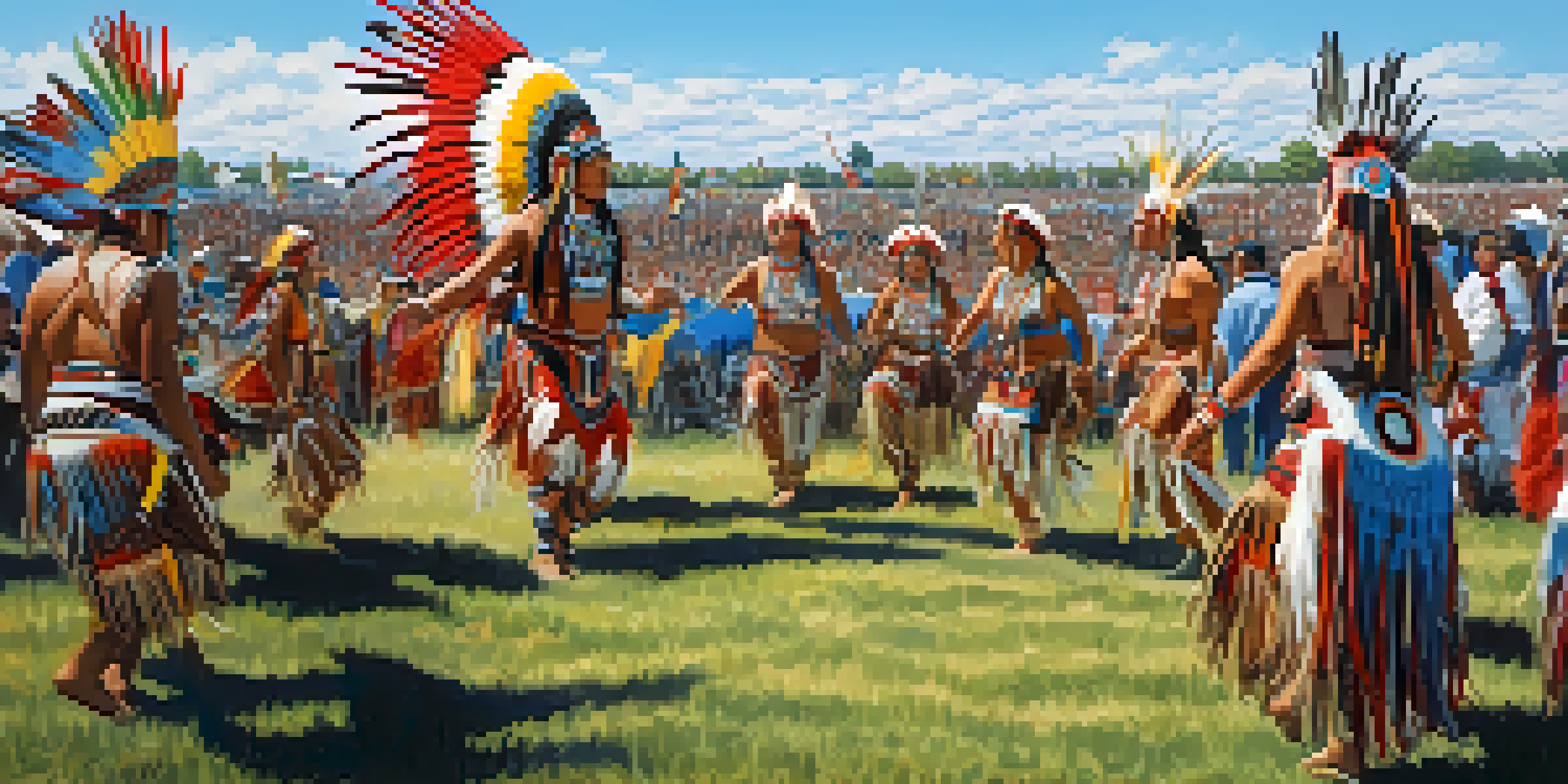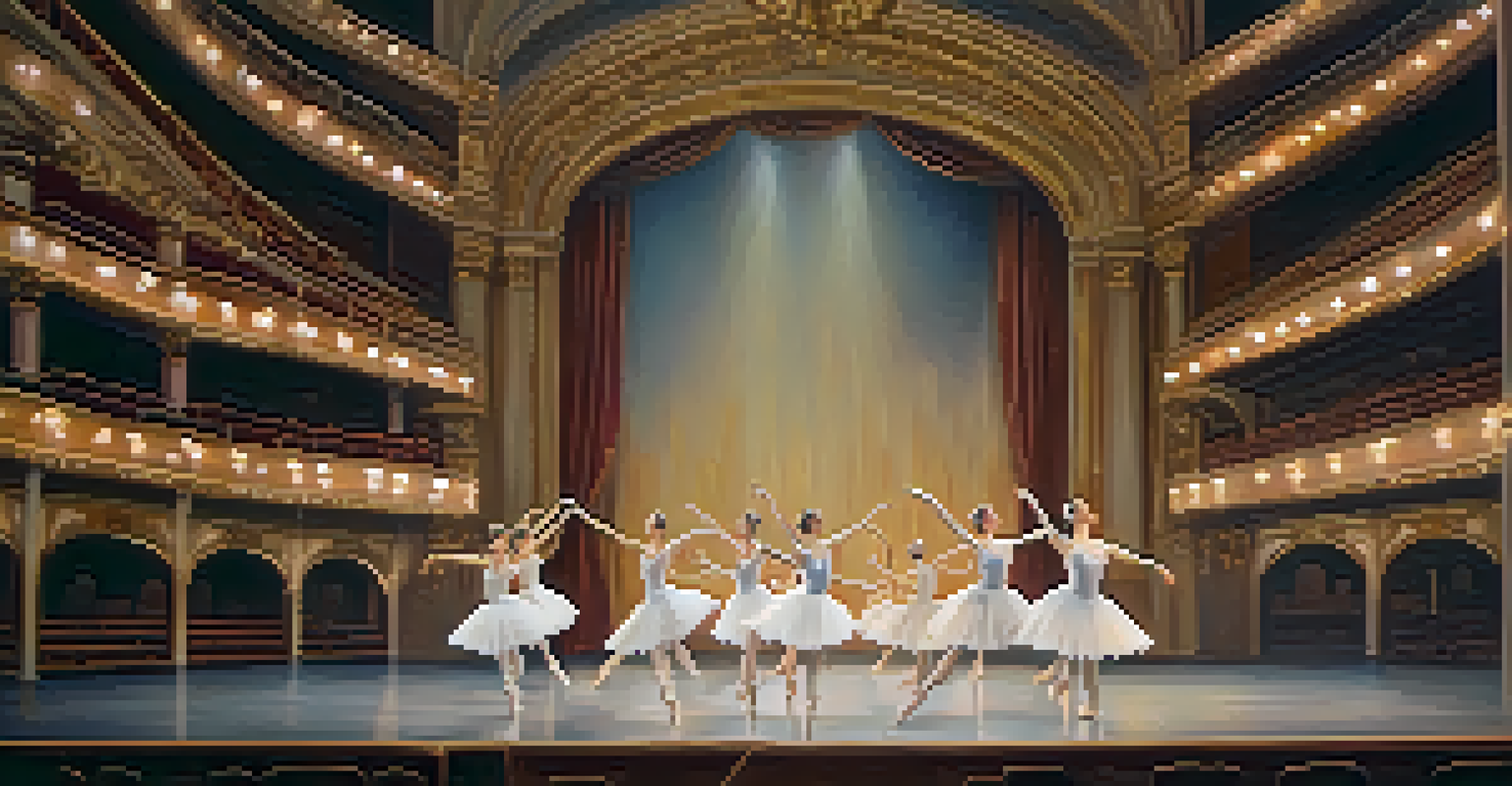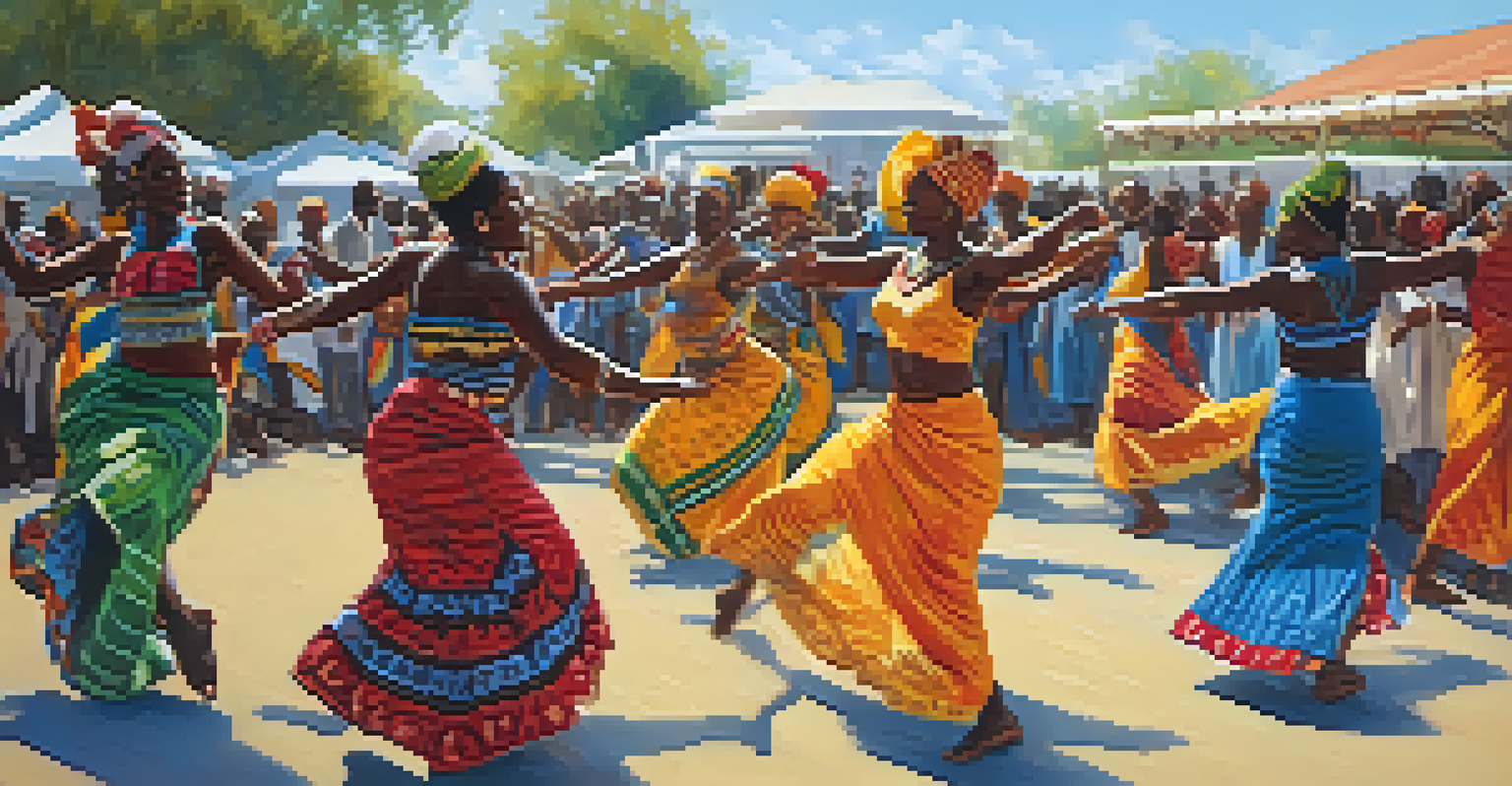Folklore and Movement: Dance as an Oral Tradition

Understanding Oral Traditions and Their Importance
Oral traditions are the lifeblood of cultures around the world, passing down stories, beliefs, and values through generations. These traditions often rely on storytelling, music, and, importantly, dance. Each dance form encapsulates the history and identity of a community, making it a powerful tool for cultural preservation.
Dance is the hidden language of the soul.
In many cultures, dance is not just an art form; it’s a way to share narratives and connect people. For instance, Native American powwows often feature dance as a means to tell stories of heritage, spirituality, and community. This living history captivates both performers and audiences, reinforcing a shared identity.
The beauty of oral traditions, including dance, is their adaptability. They evolve while retaining core elements, ensuring that the essence of a culture remains intact even as the world changes. This fluidity is what makes dance a dynamic and engaging method of storytelling.
Dance as a Storytelling Medium in Folklore
Dance can convey complex narratives that words sometimes fail to express. Each movement, rhythm, and gesture can symbolize emotions, events, or cultural beliefs, allowing dancers to tell stories that resonate deeply with viewers. For example, the traditional ballet “Swan Lake” tells a poignant tale of love and transformation through expressive choreography.

In many African cultures, traditional dance is intertwined with storytelling, where each step reflects the themes of the story being shared. Dancers embody characters, bringing tales of triumph, loss, and community to life, engaging audiences on multiple levels.
Dance Preserves Cultural Heritage
Dance acts as a vital oral tradition, passing down stories and values to ensure cultural heritage is not lost over generations.
Furthermore, these dances often invite audience participation, blurring the lines between spectator and performer. This interaction fosters a communal experience that reinforces the shared cultural narrative, making the stories even more impactful.
Cultural Significance of Dance in Communities
Dance acts as a cultural touchstone, reinforcing social bonds within communities. Events like weddings, festivals, and rituals often feature traditional dances that celebrate shared heritage and collective identity. Through these gatherings, community members strengthen their connections to one another and their cultural roots.
In every culture, dance is a way to express the unexpressable.
For instance, the Haka, a traditional Māori dance from New Zealand, holds great significance during ceremonies and celebrations, reflecting pride and unity among the Māori people. Its powerful movements and chants convey respect and heritage, creating a strong sense of belonging.
Moreover, dance can also be a vehicle for social commentary, allowing communities to address contemporary issues through the lens of tradition. This blend of old and new not only honors the past but also invites dialogue about the future.
How Dance Preserves Cultural Heritage
As an oral tradition, dance plays a vital role in preserving cultural heritage. By teaching younger generations traditional dances, communities ensure that their unique stories, values, and histories are not lost over time. This transmission of knowledge often occurs in family settings, where parents or elders pass down the steps and meanings behind each dance.
For example, in Irish culture, dance forms like Riverdance have gained global recognition, yet they remain rooted in local customs and storytelling. As younger performers learn these dances, they not only keep the art alive but also forge a connection with their ancestry.
Dance as a Storytelling Medium
Through expressive movements and rhythms, dance conveys complex narratives that words alone often cannot express.
In this way, dance becomes a living archive, rich with the experiences and narratives of those who came before. Each performance is a celebration of cultural identity, reminding audiences of their shared past.
Modern Interpretations of Traditional Dances
With the passage of time, traditional dances often undergo modern interpretations that reflect contemporary issues. Choreographers may blend traditional styles with contemporary dance, creating innovative performances that resonate with today's audiences. This fusion can breathe new life into age-old stories, making them accessible and relevant.
A great example is the adaptation of traditional Japanese Kabuki theater into modern dance performances, which maintain the original narratives while incorporating modern aesthetics and themes. This not only attracts a younger audience but also encourages a dialogue about cultural evolution.
Such reinterpretations highlight the adaptability of dance as an oral tradition, proving that stories can be told in new ways while still honoring their roots. This evolution ensures that dance remains a vibrant part of cultural expression.
Dance as a Tool for Social Change
Beyond cultural preservation, dance serves as a powerful tool for social change. Many dancers and choreographers use their art to raise awareness of social issues, fostering dialogue and empathy through performance. Dance can convey messages about equality, justice, and community, making it a vital part of advocacy.
For instance, 'Dancing for Change' initiatives often engage communities in creating pieces that reflect their struggles and aspirations. These performances not only entertain but also educate audiences about pressing social issues, creating a platform for discussion.
Modern Dance Drives Social Change
Dance serves as a powerful tool for social change, raising awareness and fostering dialogue around contemporary issues.
By harnessing the power of dance, communities can inspire action and bring about positive change, showcasing the potential of this art form to transcend cultural boundaries and address universal themes.
The Future of Dance in Oral Traditions
As we look to the future, the role of dance in oral traditions will undoubtedly continue to evolve. With the rise of technology and digital media, dances can reach wider audiences than ever before, allowing for greater cultural exchange. Social media platforms enable dancers to showcase their work globally, bridging gaps between cultures.
However, this increased exposure also presents a challenge: the need to maintain the authenticity of these traditions while integrating modern influences. It's crucial for communities to balance innovation with respect for their heritage, ensuring that the essence of their stories remains intact.

Ultimately, the future of dance as an oral tradition lies in the ability to adapt while staying true to its roots. By embracing change and celebrating diversity, dance can continue to be a profound means of storytelling that resonates with audiences around the world.